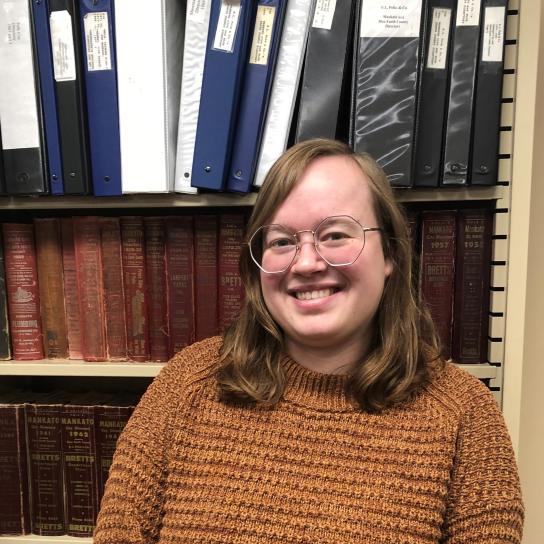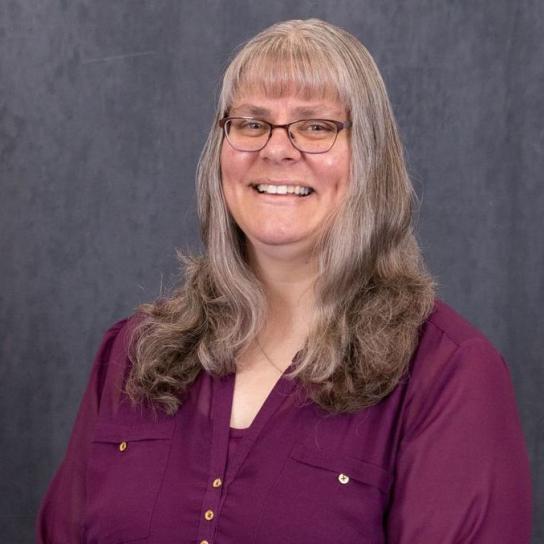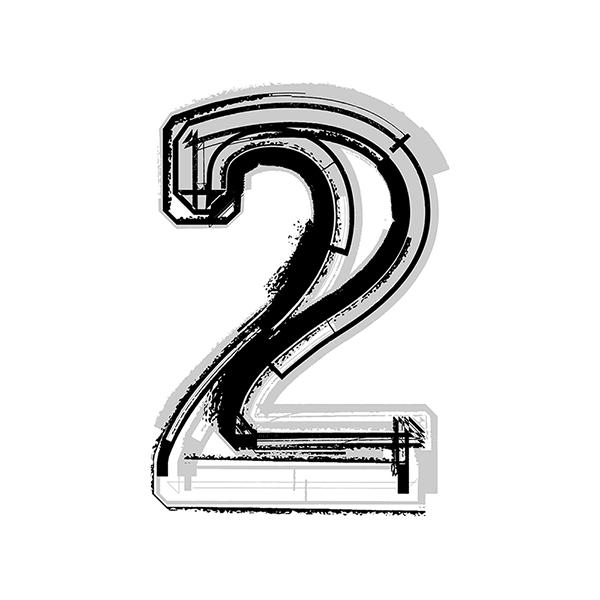Quick Summary
In 2023, Minitex and three organizations conducted a small pilot to learn more about using the wiki-based, free-to-use media repository called Wikimedia Commons, along with its sister sites Wikidata and Wikipedia, to increase discoverability of content from digital collections. Soon after adding the very first test image to Wikimedia Commons, it appeared as the top Google Search result. If this sounds intriguing, read on for a brief overview of why we did the pilot and what we learned.
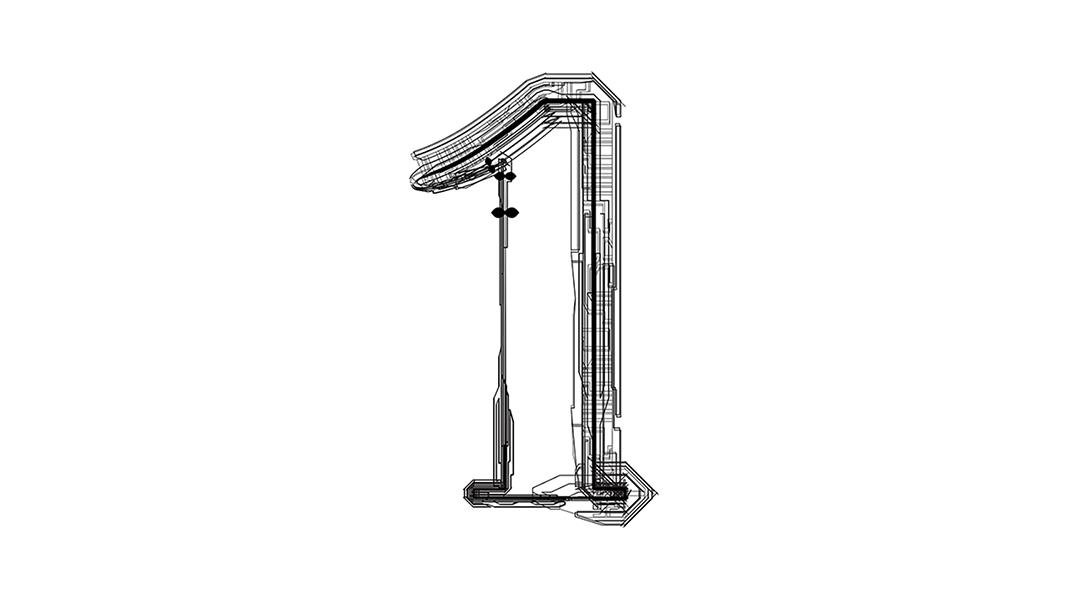
The Minitex Wikimedia pilot was inspired by the work the Digital Public Library of America (DPLA) has done. Since 2020, DPLA has worked with contributing partners to upload their open access digital content to Wikimedia Commons. Contributors then have the option to find related Wikipedia articles to connect to the Wikimedia Commons images. This work dramatically increased digital content discovery. Statistics on the DPLA website point to "more than 100 million views in total (as of May 2022) and some 8 million views each month."
Minitex staff saw the potential in these efforts and wanted the chance to learn more about the entire process. With these goals in mind, we developed a small pilot project to:
- Partner with other libraries/cultural heritage organizations that already had existing digital content in the Minnesota Digital Library and/or their own digital collection.
- Test proof-of-concept that adding content to Wikimedia Commons leads to increased discovery of digital collections.
- Learn more about the practical applications of linked data (Wikimedia refers to it as “structured data, ” and it can be added to each item uploaded to Wikimedia Commons)
Pilot participants included:
- Pilot Lead: Sara Ring, Minitex
- Greta Bahnemann, Minitex - Minnesota Digital Library
- Theresa Berger, University of Minnesota Libraries
- Bri Krumwiede, Blue Earth County Historical Society
- Shelley Harrison, Blue Earth County Historical Society
- Heidi Southworth, Minnesota State University, Mankato
We set a target for the participants to: add at least 25 items to Wikimedia Commons, connect those items to related Wikipedia articles when possible, and add structured data (linked data) from Wikidata. The process was similar to the DPLA project, though we did not upload the items to Wikimedia Commons through a batch process like DPLA. As one of our goals was to learn more about tools available for practitioners, each pilot participant uploaded and edited their own content. The process was:
- Upload files to Wikimedia Commons
- Make connections to Wikipedia articles , if possible
- Add structured data from Wikidata to each item in Wikimedia Commons
The work occurred over the summer of 2023, and we presented our results at regional library conferences.
Main Takeaways
Documentation is Key
While Wikimedia Commons had various generic upload templates, there was no clear guidance in the support documentation on how to add or format metadata for archival content, so we created our own upload template guidelines. The template was tested and ultimately adopted by all participants, which made it much easier to add metadata and format data in the wiki editor. We also spoke with and used several of Trevor Martinson’s guides from the North Dakota State Library project.
- Wikimedia Commons File Information Template Guidelines
- Template applied to a file in Wikimedia Commons (Look at the “Summary” information)
The same strategy was used for adding structured data. There is not yet wide adoption in Wikimedia Commons, so we created our own template.
- Wikimedia Pilot Structured Data Guidelines
- Example of item with structured data (Select “Structured data”)
Discoverability Increases
Overall, the statistics we tracked showed all pilot participants had increased views of their digital content (Note: Wikimedia refers to them as “requests”). In some cases, embedding content from Wikimedia Commons in Wikipedia articles appeared to further increase the reach of the content, as we often saw a higher number of requests for this type of content, but not always. For example, the Blue Earth County Historical Society found and added many connections in Wikipedia articles to the content they uploaded and also saw pretty high numbers of requests of their content (some items had over 10,000 views/requests(!) at the time this article was written). The 3 records listed below demonstrate page views/requests over time.
- Grand Army of the Republic Encampment, Blue Earth County Historical Society
- Portrait of President Edward Searing, Minnesota State University Mankato
- Katherine Jane Densford, Cincinnati,1923, University of Minnesota Libraries
Anyone can view the statistics for any item in Wikimedia Commons. Start by going to a Wikimedia Commons item. For example, here is the Blue Earth County Historical Society item: Grand Army of the Republic. On the left, under “Tools,” click on “Page information.”
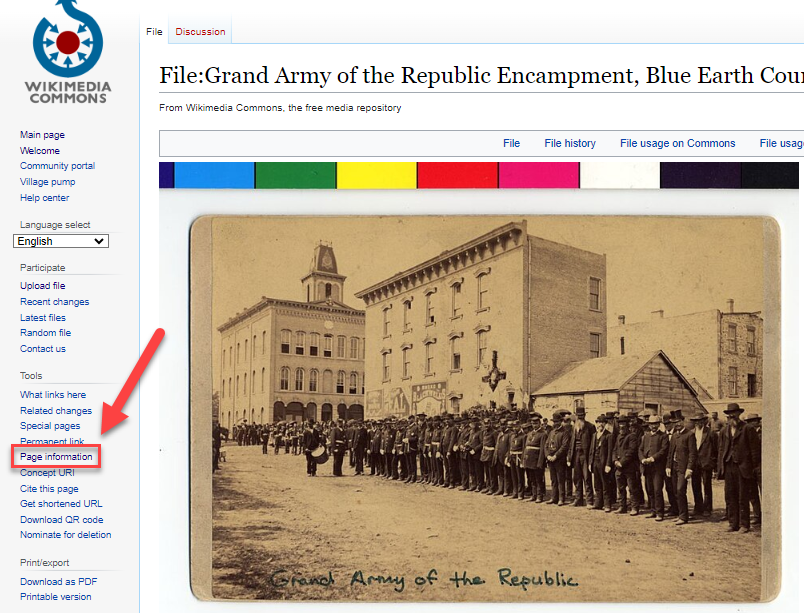
Scroll all the way to the bottom of the “Page Information” page, then click on the link Mediaviews Analysis on Toolforge.

In addition to the Mediaviews Analysis information, some pilot participants looked at the referral traffic from Wikimedia Commons to the Minnesota Digital Library or their own digital collection. Blue Earth County Historical Society began uploading content to Wikimedia Commons in May 2023. By June, it was their second top referral source, and by July it was their top referral source. University of Minnesota’s UMedia digital collections platform received referral traffic from almost a dozen international countries.
What cannot be systematically measured, but is worth mentioning, is the increased prominence of the content in search engine results. After adding their first test image to Wikimedia Commons, an item from Minnesota State University Mankato appeared as the top Google Search result (the search was “Adolf Bechdolt Mankato”).
Learning Together is Better
Before the pilot, participants indicated they had no experience working with any of the wiki projects (Wikimedia Commons, Wikipedia, and Wikidata) or linked data. The Pilot created an environment that allowed all of us to learn more about the Wikimedia platforms, and to learn from each other. Participants also learned about creating and adding structured data, which comes from Wikidata. While we added some structured data and better understand how it works and the potential, it has not been that widely implemented yet in Wikimedia Commons (beyond the depicts statement). We had to work as a group to figure out what documentation and templates we needed to make this work more approachable.
All of the pilot participants expressed they would like to further explore projects such as this. Minitex/MDL would also like to pursue another project with interested MDL Contributors.
Pilot Project Links
You can find all the items each organization contributed to Wikimedia Commons by visiting the links below.
- Media contributed by the Blue Earth County Historical Society
- Media contributed by Minnesota State University Mankato
- Media contributed by University of Minnesota Libraries
To view these items on Wikipedia pages, follow these steps:
- After visiting an organization’s category landing page, click on one of the images.
- Scroll down to the very bottom of the page and look for the heading “File usage on other wikis.”
- If you see a link, follow it to the Wikipedia page to see where the image appears in the Wikipedia article.
If you’re interested in learning more about how we did the technical work of the pilot, continue reading the next article in the series, Making Digital Collections More Discoverable, Part 2: A How-To Guide.



